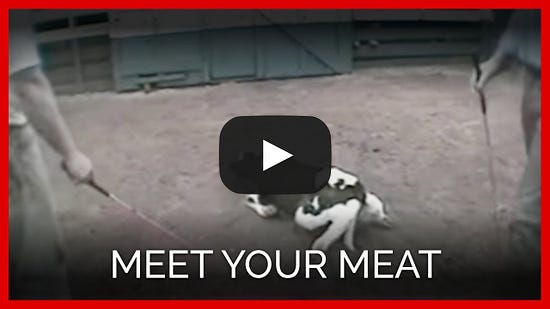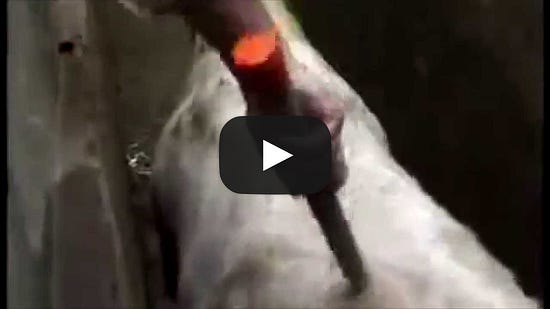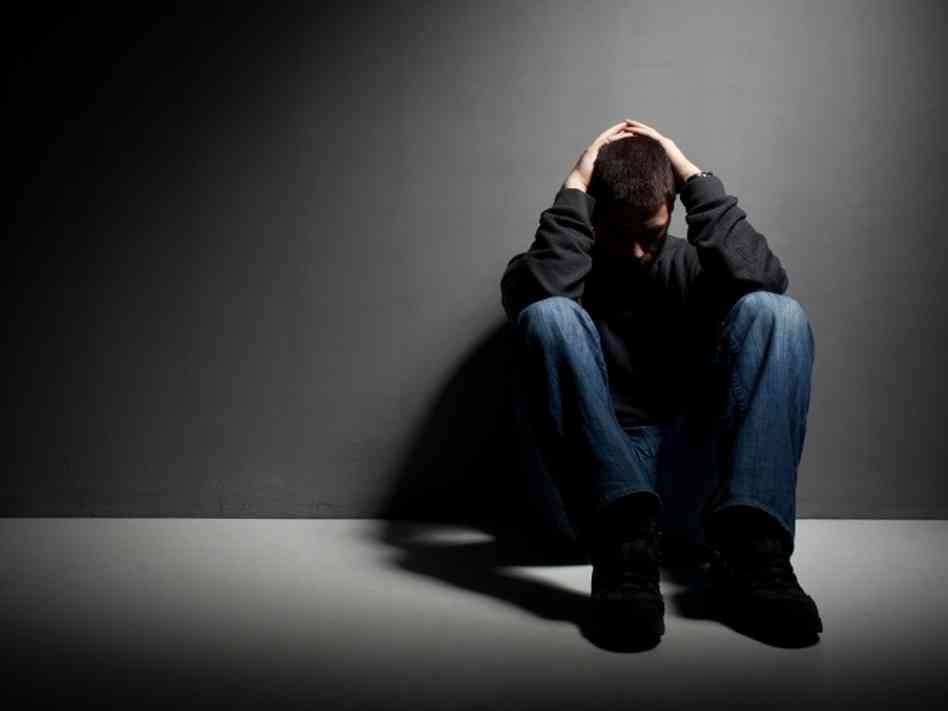How to find community in a disconnected world
A ruined career. A near suicide. And a cure for despair in the most unlikely of places: a blood-stained slaughterhouse.
It’s 2007, and I should be at my highest point in life. I am the only student in my class at the University of Chicago to secure a prestigious faculty position right out of law school. I have published a paper in one of the top law reviews in the country. And I am being told, by one of the most influential scholars of our generation, that I have a future as a “star” in the field of law and economics.
But the only high I am feeling is the pulse-pounding anxiety of falling 100 feet below me, as my feet dangle from the edge of the top floor of the Northwestern Law parking lot. You see, my professional success is accompanied by a profound social isolation; I have no friends, limited connections to my family, and have never even been on a date.
Just a week before, I witnessed someone’s dead body, after they made the plunge face first into concrete. I am committed to following their lead. That day in 2007 was my first effort at that.
But I change my mind at the last minute. “Not now,” I say to myself. After all, I still need to find someone to take care of my dog.
The story of my own struggles with loneliness is now the story of our nation. Despite overwhelming security and abundance, the human species is in a moment of historic despair. Over 100,000 people killed themselves from drug overdoses in 2021, the highest number ever recorded and an increase of over 150% in just 10 years. Suicides have skyrocketed. And a shocking 61% of Americans now say they are lonely. That’s not just a happiness issue but a health issue, as the stress caused by loneliness is as deadly as smoking 15 cigarettes a day.
My life is a vivid example of this, as the despair of my isolation left me moments from taking my life. In 2007, I had tried almost everything to overcome the depression that felt so crushing that, sometimes, I couldn’t breathe. (One panic attack in a colleague’s office left him wondering if I had undiagnosed psychosis.) But I had yet to find the one thing that I needed, perhaps the only thing, that could cure my despair: a meaningful connection with other living beings.
Then something miraculous happened. I found that connection in the most unexpected of places: behind the blood-stained walls of Chicago’s last remaining abattoir. Ironically, a slaughterhouse saves my life.
—
I have told the story of walking into a slaughterhouse for the first time, in a podcast with Ezra Klein, and the momentous impact it had. What I have not shared, however, is the mechanism through which this experience changed my life. I am now among the happiest and most resilient people I know. Moments that previously shook me to my bones — a casual rejection from a friend; too harsh feedback from a colleague — now feel like pleasant waves on an ocean cruise. And the change all started with a chance encounter with a lamb inside a slaughterhouse.
I had intended to rescue an animal at that slaughterhouse, as a last ditch effort to do something good with my life, just days after my first attempt at throwing myself off a building in Chicago. But when I walked into the abattoir, in the middle of the night, I quickly realized that it would be impossible to remove a fearful 120 pound lamb, or a 400 pound calf, by myself.
So instead I just sat down and watched the little lamb, bearing witness to the fear and suffering that suffuses the slaughterhouse floor.
Then something unexpected happened. While most of the lambs flee in terror, clambering over each other when I made even a gesture in their direction, one little lamb did something very different. She approached, and stared straight into my eyes.
“You seem different than the others. You’re not here to hurt me, are you?” she said to me, with her body language and her eyes. “I’m scared. I can smell the blood and hear the screams. Can you take me away from this place?”
The strange mix of adrenaline and purpose and desperation jolted my spirit from its despair. As this little lamb stares intently at me, I am visible. I am needed. I am connected, if only for this brief moment. Even in failure — the little lamb did not make it out alive of the slaughterhouse — I’ve found my purpose in life.
—
The animal sanctuary is not just a place, but an idea. It is a theory of the good life: that disconnection can be cured by compassion. By caring for all the creatures on this earth — big or small, strong or weak, pig or human or cat — all of us benefit. All of us feel a sense of safety and trust and connection that transforms our relationship, not just with the world, but with ourselves.
Intuitively, I recognized the power of this idea in that moment at a slaughterhouse. I have spent most of the last 15 years trying to understand what, exactly, that intuition truly meant. And I’ve had help. There is now a burgeoning literature on the science of social connection that has elevated its importance to social and political life. Here are the three most important lessons I’ve learned.
Connection depends on authenticity, and dies in the virtual world. We live in a machine world. Our work, our play, even our most intimate relationships are now filtered through digital devices. My experience with animal suffering, up to 2007, was primarily through this lens. I had probably seen as much animal suffering as anyone on the planet, after years of playing and distributing Meet Your Meat (below) in Chicago. But I had never met a suffering animal face to face.

Meeting the lamb at the Chicago slaughterhouse exploded my virtual world. And that had two powerful impacts. First, it made very real the animal exploitation that had previously lived only in the nightmare of my mind. This had the interesting consequence of allowing me freedom from it. The torture of animals was not a demon afflicting my being and soul; it was a real, concrete, and external thing that I could separate myself from, in both the physical and mental world. Second, and partly because of this separation, the experience with the lamb taught me that I had power to change this external world (and my internal experience of it). As I described in the podcast with Ezra Klein, the most shocking thing about my slaughterhouse visit was how easy it seemed to get in and out. If I had a friend, or more physical strength, rescuing an animal would be a piece of cake.
There is now strong evidence that I am not alone, in finding the real world a more invigorating and optimistic place, even and perhaps especially for those suffering from nightmares (real or imagined). Social media usage is associated with depression, and the more visual platforms, like Tik Tok, seem to inflict the heaviest toll. These visual platform give us virtual worlds to replace those that are real. But they are, in fact, a pale imitation that causes a disease of the soul. To cure this disease of loneliness, we have to get offline. We have to get real.
The second lesson is that connection is born from bravery, especially when the world feels unsafe. Part of the reason for my deep despair was that I was scared. Scared of my future. Scared of my colleagues. Heck, scared of most human beings. But, as I have previously suggested, research shows that the cure to fear isn’t safety but bravery. We have to push ourselves, strategically, into unsafe spaces to form connections with others, and even with ourselves. Every interaction with another living being, especially beings as powerful as our fellow human beings, is filled with potential danger. But if we overcome this fear, the connections we form with one another are worth it — and are crucial to saving the world.
This is what happened to me when I walked into the slaughterhouse. I had been living my life in fear. Taking one significant risk — sneaking into a slaughterhouse when I had nothing else to lose — transformed my relationship to fear. And it allowed me to overcome all sorts of other fears that had prevented me from connecting with others — animals, human beings, and even myself. Asking someone out on a date, for example — which I had never done at that point in my life, due to paralyzing fear — became much easier after my experience in the slaughterhouse. “I’ve walked into one of the most violent places on earth. Why should I be scared of rejection from a girl?” I told myself. And it worked.
There’s good evidence that it can work for other human beings, too. Our species was not meant to live in faceless dystopian metropolises, that most of us now live in, surrounded by strangers. As a species, we evolved to be fearful of what seems new — especially if this “new” thing is an unknown animal or human being. But if we don’t adapt our intuitive fear to the world in which we live, one where “new” animals and human beings come into contact regularly on a scale of billions, we will take our planet off a proverbial cliff. Because a world ruled by fear will inevitably fail.
But the third and most important lesson is that connection is grounded in purpose. I felt a deep sense of connection to that little lamb in Chicago because of our shared purpose: saving her from death. And though we had never met before, and we had no interactions after, the connection, for me, was deep.
You have probably had a similar experience. Perhaps you’ve met someone who has a shared taste in music, in film, or even in food. The connection you feel is instant and powerful.
“OH MY GOD!” I have exclaimed so many times. “You love Finding Nemo, too? That’s awesome!”
But of course some purposes are more powerful than others. And the deepest of all purposes is the meaning of life. This is why religion has been so often a source of solidarity and comfort: it answers that question (rightly or wrongly) for us all.
The experience with the lamb taught me that if, even in a moment, I found a shared meaning to my life, it would connect me to others, and cure me of my sense of loneliness and despair. And that is exactly what my passion for animal rights has done. More than anything else, meeting and sharing stories with compassionate people has utterly transformed my experience of life.
It is also the reason I started the grassroots animal rights network Direct Action Everywhere. Because I believed so many people, lonely in their lack of shared purpose, could be empowered and transformed by finding others with a similar meaning in life. The first video I ever edited, clumsy though it is, showcases this effect.

But animal rights, at least as it is popularly understood, has a limited ability to connect all the human beings on this earth. Consider, for example, a recent Vox article that asks, “Why do people hate vegans so much?” What I’ve come to realize is that the shared purposes that can transform everyone, and not just those predisposed to a particular ideology (righteous or otherwise), must be more general and practical in nature.
And that is why Priya, Dean, and I are starting a new organization: The Sanctuary Initiative. And its purpose is quite simple: to deliver on the promise of a caring and supportive community for every living being on this earth. It is a purpose that connects us all, regardless of race, nationality, or even species, because it is the most fundamental condition for living a good life. So let’s start building that vision together.
—
There is much more to say about this, and how the trials I face in the coming months intersect with this purpose. But for now, let me offer these updates.
Our first public event for The Sanctuary Initiative is happening today at 7 pm at my new space in San Francisco. We will be asking for your thoughts and ideas on the subject of this blog post, if you have any, and also just providing a space for people to eat, connect, and have fun. If you’re in the Bay Area, please feel free to join in person. (See lesson 1 about community above.) But we also plan to offer a Zoom link. Message The Sanctuary Initiative Facebook page if you’d like that link.
An important hearing is occurring in the Smithfield trial on Monday. Among other issues, we will be debating whether I am entitled to represent myself at trial — the government is claiming that I will be too disruptive — and whether the defendants are entitled to a public trial. The latter issue is particularly important given that there are 100+ people already signed up to attend, including journalists, activists, and supportive lawyers. The current courtroom can fit only 21 people! But I am confident we will find a way to engage everyone in the story of open rescue, regardless of what the judge decides.
Every Friday, the topic for the blog, and for an accompanying (and short) Friday Night Hangout discussion, will be chosen by you. On Tuesdays, I’ll pick the subject of the blog, though your feedback will still be highly valued. But I am going to reserve Fridays from here on out for the topics that matter most to, and deliver the most practical value for you. And we’ll talk about them together at Friday Night Hangouts.
You chose next week’s Friday blog and hangout topic: Inequality starts with your diet. But I will have a take on this that most people will not expect. In particular, I will not be making the claim that factory farming is the source of modern inequality. I will be going much deeper, and further back in history, than that. As always, I’m very interested in your ideas on this. So I hope you provide comments to my blog, when it’s posted, and even better join the conversation next Friday.
Stay tuned for a survey for the topic for July 29. On a forward-going basis, we’ll send out a survey on Friday asking for your feedback on possible topics for discussion. That survey will determine the topic for the next week. In other words, a survey on July 22 will choose the topic for July 29. Stay tuned, but if you have any particular ideas, throw them in the comments.
If you liked this post from The Simple Heart, why not share it?
